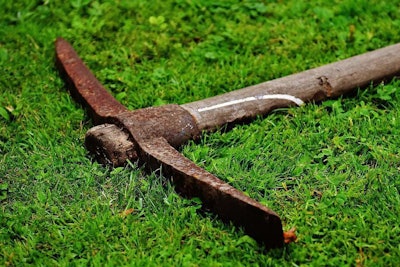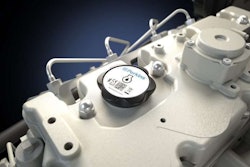 Photo: Pixabay
Photo: PixabayIn the midst of your busy season, it can sometimes be a challenge to remember to maintain your equipment like zero-turn mowers, but hand tools can be neglected far more often.
Despite the fact there are no air filters or spark plugs to change with handheld gardening tools, this does not mean that they are completely maintenance free. Even simple tools like shovels and pruning shears are not without their needs. Everything responds well to some TLC and tools that are cared for will also last far longer than those that are used and abused.
Clean
Many plant diseases can be spread by using infected garden tools, so it’s a good idea to get in the habit of cleaning and sterilizing your tools. Cleaning is pretty straight forward as a bucket of warm water and a wire brush can be used to knock off a majority of the dirt, and the rest can be scrubbed off in the water.
After the tools have been cleaned of debris, you have several different options as to what type of disinfectant to use. Household disinfectants are easy to find and use, but there is little research as to how effective they are against plant pathogens.
Chlorine bleach requires a 30-minute soak and should be one part bleach to nine parts water. The disadvantage is that it is corrosive and isn’t effective controlling some viruses. Another option that is highly corrosive is trisodium phosphates, which should be used in a 10 percent solution like bleach. The tools should be rinsed after soaking to prevent corrosion.
Ethanol or isopropyl alcohol can be used as a wipe and are immediately effective. Their only drawback is that they are highly flammable. Pine oil products should be used in 25 percent solution (one part pine oil to three parts water). While not as corrosive as some of the other options, it is also not as effective.
No matter what you choose to use to disinfect your hand tools with, it is important to sterilize as frequently as possible to prevent spreading plant pathogens.
Sand
Once the tools are dried, those with wooden handles should be sanded with sandpaper. Sanding will prevent splinters as moisture can cause the grain of the wood to rise. Sandpaper can also be used to clean off any rust on the tools. Wipe down the tools to remove any sanding dust from the wood or metal.
Sharpen
Just like how you would sharpen the blades on your mower to maintain a better cut, sharp garden tools make better cuts on foliage, allowing the plant to heal properly. Before starting to sharpen any tool, always make sure to wear eye protection, as well as heavy gloves to prevent injuries caused by slivers of metal. It is best to use a clamp, vice or other bracing system to keep the tool steady as you sharpen the desired edge.
No matter what tool you are sharpening, be patient and keep the angle in mind. It is best to follow the factory bevel as you can ruin a tool by putting an incorrect angle on the edge. While the tool blade will be sharp, it will be so thin it will become easily damaged.
If you or your employees are not comfortable sharpening your own tools, there are always professional sharpening services that can hone them for you.
Oil
Despite what some sources will tell you, thinking that any oil, including motor oil, will work when it comes to lubricating your tools, you need to steer clear of petroleum based oil. You wouldn’t pour motor oil on your client’s yard, and that is the equivalent of what you’re doing when you coat your tools in oil and then use them to till the soil.
While metal tools do need to be protected from oxidation and oil creates a barrier preventing oxygen and water from reacting with the metal, opt to use natural oils such as boiled linseed oil, which comes from the seeds of a flax plant. Boiled linseed oil can also be used on wooden handles to prevent cracking and drying out.
Another non-petroleum lubricant you can use is the Felco Lubricant Spray. Once the oil has been applied, let it soak for around 15 minutes and then wipe off the excess. No oil should be left on the surface, just a very light film.









